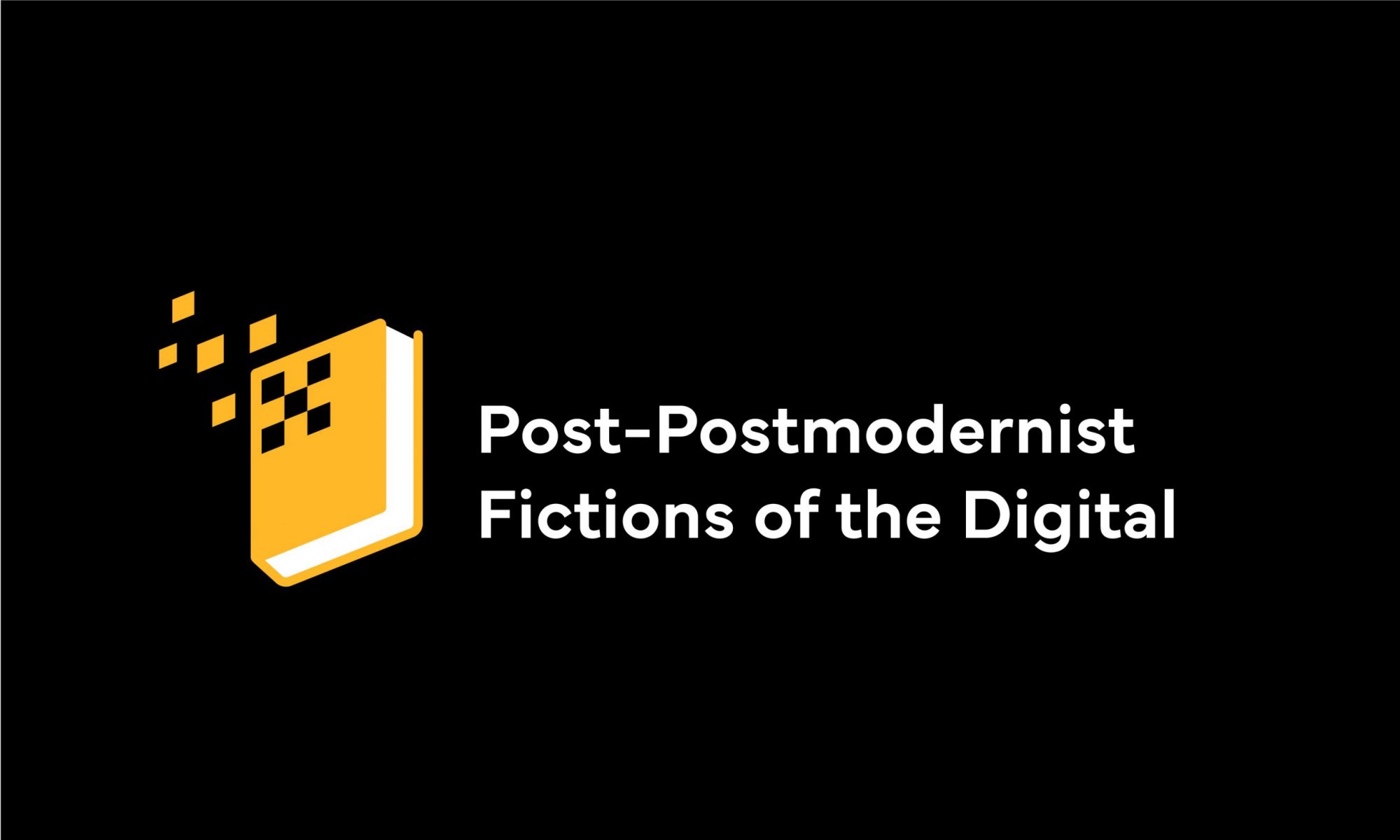Our latest research proposes and examines the new generic category of post-postmodernist fictions of the digital (PPFDs): contemporary print fictions that imitate, incorporate, and/or utilise digital media, and also display thematic concerns for the digitally mediated worlds in which they are set.
We distinguish between PPFDs that include visual representations of digital media (what we call multimodal PPFDs) and PPFDs that include a digital element alongside the printed novel (what we call transmedial PPFDs).
Our typology of PPFDs distinguishes between six types as shown in the table below.
| Category | Definition | Example |
| 1. Multimodal using Low Visual Modality | Make use of internal variations in typeface to distinguish between media and/or incorporate text alignment, and page layout to distinguish between narrative discourse and digitally mediated communication such as instant messaging and/or emails. | Conversations with Friends (2017) by Sally Rooney |
| 2. Multimodal using Moderate Visual Modality | Make use of more pronounced typographic features like lines, boxes, colour, text alignment, page layout and typeface changes to distinguish types of digital media and the main narrative discourse. | Where’d You Go, Bernadette (2012) by Maria Semple |
| 3. Multimodal using High Visual Modality | Replicate digital media using, for example, graphic renderings and/or facsimiles. | A Visit from the Goon Squad (2010) by Jennifer Egan |
| 4. Multimodal and Transmedial | Contain both multimodality and transmediality and thus combine both modes and media. | Night Film (2013) by Marisha Pessl |
| 5. Transmedial using Peritexts | The digital components of the novels are signalled from within the text. | Open Water (2021) by Caleb Azumah Nelson |
| 6. Transmedial using Epitexts | The digital components of the novels are not signalled from within the text. | There, There (2018) by Tommy Orange |
We distinguish between types of multimodality on the basis of what Nina Nørgaard, building on the seminal work of social semioticians Gunther Kress and Theo van Leeuwen, calls “visual modality.” As Nørgaard explains, visual modality “concerns (not the truth but) the truthfulness of the representation – that is, whether what we see looks the way (we imagine) it would have done if we had been there” (2023, 158). It thus relates to the relative faithfulness or authenticity of an image or other visual representation such as typography or layout in relation to the thing it seeks to represent.
We distinguish between different types of transmediality by repurposing Virginia Pignagnoli’s use of Gérard Genette’s concepts of epitext and peritext. In our use of these terms therefore, “digital epitexts” are not signalled from within the text and “digital peritexts” are. Unlike Pignagnoli’s conceptualisation of digital epitexts in contemporary fiction, the epitextual material in PPFDs is intended to add to the narrative in some way as opposed to containing information about the author or the writing process, for example. However, we utilise the term because it captures the way that material that is not contained within the printed novel contributes to the construction of the storyworld.
In terms of the post postmodern nature of PPFDs, we argue that the texts are post postmodernist because they utilise textual devices associated with postmodernism (e.g. self-reflexivity) but they exhibit a more pronounced interest in the negotiation of societal, political, and ethical questions than their postmodernist predecessors (cf. McLaughlin).
References
Kress, Gunther R, and Theo Van Leeuwen. Reading Images: The Grammar of Visual Design. London and New York: Routledge, 2006.
McLaughlin, Robert. “Post-Postmodernism.” In The Routledge Companion to Experimental Literature, edited by Joe Bray, Alison Gibbons, and Brian McHale, 212-23. London and New York: Routledge, 2012.
Nørgaard, Nina. “Fictionality and the Multimodal Positioning of the Reader in Christian Jungersen’s You Disappear.” In Fictionality and Multimodal Narratives, edited by Torsa Ghosal and Alison Gibbons, 155-75. Lincoln, NE: Univ. of Nebraska Press, 2023.
Pignagnoli, Virginia. Post-Postmodernist Fiction and the Rise of Digital Epitexts. Columbus: The Ohio State Univ. Press, 2023.
You can read in more detail about our definition and typology of PPFDs in our article: Alice Bell, Jan Alber, Nadia Georgiou, and Denise Wong. (in press). ‘Multimodality, Transmediality, and Ethics in Post-Postmodernist Fictions of the Digital.’ Narrative.
